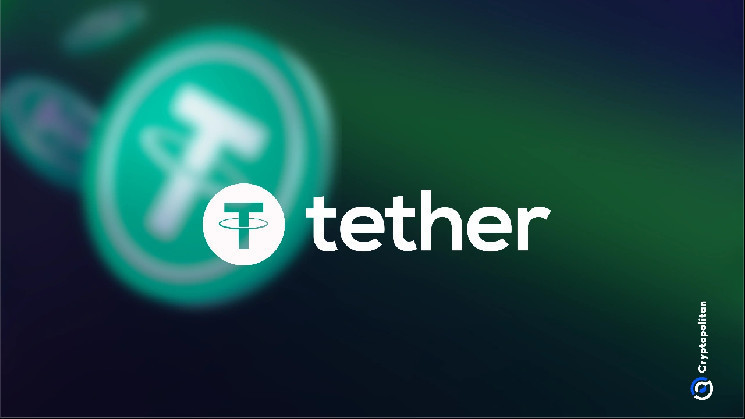Stablecoin inflows to exchanges are returning, signaling a shift in sentiment. CryptoQuant data shows that $450M in USDT flowed into centralized exchanges, the highest level since February 3.
Liquidity is flowing back to exchanges, with $450M deposited in the past 24 hours. The inflows are the highest since February 3. The net inflows show more stablecoins were moved to markets than were taken out. The recent spike in net inflows suggests a bigger market move may follow.
The positive net flows follow a recent liquidity injection, where briefly as much as $2.7B in stablecoins entered the markets. This time, USDT was the more active stablecoin. Inflows of USDT and USDC may signal both bullish attitudes or the need to cover leveraged positions. Exchange inflows and outflows shift their direction more rapidly in the past few months, immediately responding to shifts in sentiment.
The increased inflows followed a turbulent day for the crypto markets, where Bitcoin (BTC) hovered between the $95,000 and $97,000 range, while Solana (SOL) returned to levels from the end of 2024. The recent stablecoin inflows follow ongoing ‘buying the dip’ as more BTC is making its way into accumulation addresses.
Stablecoins increase overall supply, remain top gas burners
The exchange flows are reflecting the increased supply of top stablecoins. UDSC added 8.7B tokens in the past month, while USDT expanded its supply by 5.1B tokens.
Stablecoins are already showing liquidity is waiting on the sidelines, with $226.8B available through leading dollar-denominated assets. The supply of all stablecoins increased by 7.79% in the past month, but the tokens stayed less active. Up to 30.3M addresses spent stablecoins, though the activity is down by 26.7% in the past month. The increased inflows suggest stablecoin holders may be reawakening.
Tether’s smart contract remains the biggest gas burner for Ethereum. The recent supply injection follows increased gas usage in the past couple of days. USDT remains highly active on Ethereum, making use of the currently favorable transaction fees.
Tether still burns over 5.1% of all gas on Ethereum. Circle’s USDC token has a less busy contract, with 2.53% of gas burns in a 24-hour period. Both USDT and USDC had some of their most active days on January 20 and February 3, showing stablecoins reacted immediately to market shifts and opportunities.
Exchanges hold $42B in dry powder
While exchange reserves for BTC and Ethereum (ETH) are near all-time lows, stablecoins have accumulated on most markets. The overall liquidity on exchanges increased in the past weeks, rising to $42.4B. The liquidity is not yet deployed, as trader behavior signaled ‘fear’, based on the Bitcoin fear and greed index.
Exchanges hold peak USDT reserves, though the biggest inflows went to derivative exchanges, most prominently Binance. | Source: Cryptoquant
One of the curious changes for stablecoin usage is that spot exchanges have seen almost constant outflows. The big shift in dry powder is on derivative exchanges. Binance’s inflows were the steepest, as over $28B of the available liquidity is locked on the exchange. Bybit also saw a steep rise in stablecoin inflows, so far accumulating $3.1B. Smaller markets like Crypto.com have accrued $410M in available liquidity.
Not all exchanges see the same available stablecoins for trading, and Binance may still lead during the next part of the cycle. Open interest is shifting downward for riskier stablecoins, while still remaining relatively low for blue chips like BTC and ETH. However, the available dry powder reveals a preparation for a shift in sentiment and for rebuilding leveraged positions.
For now, not all of the liquidity is deployed, as traders are more cautious. However, the accumulation of stablecoins may not mean direct buying, but even more speculative trading in derivatives. The collection of simple spot exchanges holds a fraction of the available USDT liquidity.
Read the full article here
